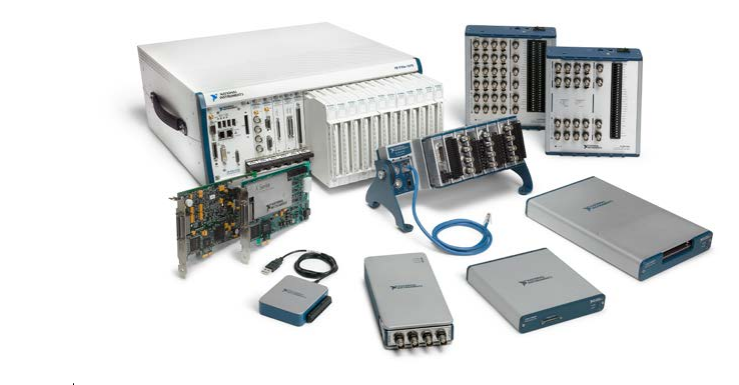When selecting a DAQ device, have you considered these influencing factors?
—— The choice of architecture and robustness will determine the applicable scenarios of the system, such as a controlled laboratory or unpredictable field conditions.
—— The selected bus can determine not only the throughput and latency of the DAQ system but also the portability of the measurement device.
Today, we will systematically outline the six major technical factors to consider when choosing the appropriate bus and architecture for measurement applications. Ps: This article is excerpted from a practical manual personally written by NI experts, let’s take a look at the “Scholar Notes”.
All PC buses have a limited amount of data that can be transmitted in a given time. This limitation is called bus bandwidth, typically measured in megabytes per second (MB/s). If dynamic waveform measurement is crucial for the application, it is essential to use a bus with sufficient bandwidth.
Depending on the bus you choose, the total bandwidth can be shared among multiple devices or dedicated to specific devices. For example, the theoretical bandwidth of the PCI bus is 132 MB/s, shared by all PCI cards in the computer. Gigabit Ethernet provides 125 MB/s of bandwidth, shared by devices on the subnet or network. Buses that provide dedicated bandwidth (such as PCI Express and PXI Express) can offer maximum data throughput for each device.
When performing waveform measurements, a specific sampling rate and resolution must be achieved based on the speed of signal changes. The required minimum bandwidth can be calculated by multiplying the number of bytes per sample (rounded to the next byte) by the sampling rate and then by the number of channels.
For example, a 16-bit device (2 bytes) sampling at 4 MS/s on four channels will be:

Your bus bandwidth needs to support the speed of data acquisition, it should be noted that the actual bandwidth of the system is often lower than the theoretical maximum bus bandwidth. The actual bandwidth of the system depends on the number of devices in the system and the additional overhead that occupies the total bus bandwidth. If a large amount of high-resolution data needs to be transmitted across multiple channels, bandwidth may be the most critical consideration when selecting a DAQ bus.
Applications requiring single-point read/write often need to update I/O values in real-time and continuously. The hardware and software implementation based on bus architecture may make single-point I/O requirements a decisive factor in your choice of bus. For example, single-point I/O is crucial for proportional-integral-derivative (PID) control systems, and bus latency directly affects the fastest speed of the control loop.
Bus latency reflects the response speed of I/O, which refers to the time delay between calling the driver software function and updating the actual hardware values of the I/O. Depending on the bus chosen, latency can range from <1 μs to several ms.
Another important factor for single-point I/O applications is determinism, which measures the consistency of I/O execution on time. Determinism is vital for control applications as it directly impacts the stability of the control loop.
💌 Ps: This article is excerpted from the “How to Choose the Right DAQ Device: Bus and Architecture” manual, which is an important chapter in the measurement system construction guide. For detailed content, please click 👉Read the Original to view the complete manual.
Portable computing has brought new innovative ways to PC-based data acquisition. Portability can easily become the primary reason for choosing a particular bus. For example, vehicle-mounted DAQ applications benefit from compact structures and convenient hardware.
External buses such as USB and Ethernet enable quick hardware installation and are compatible with laptops, making them particularly suitable for portable DAQ systems. Bus-powered USB devices powered through a USB port provide additional convenience as they do not require a separate power supply.
In different applications, the distance between the object to be measured and the computer varies. To achieve excellent signal integrity and measurement accuracy, DAQ hardware should be placed as close as possible to the signal source.
Using long cables for wiring across bridges or workshops is not only expensive but may also lead to noisy signals. One solution to this problem is to use a portable computing platform to move the entire system closer to the signal source. With wireless communication technology, there is no need for a physical connection between the computer and the measurement hardware, and distributed measurement can be implemented to send data back to a centralized location.
Now, there are increasingly more tests that need to be conducted outside of laboratory environments, so when selecting a DAQ device, it is necessary to consider the environment in which the DAQ system will operate and ensure that the DAQ system is suitable for such environments. Check the working temperature and shock and vibration ratings: for extreme environments, consider the ingress protection (IP) rating, which indicates the dust and water resistance level of the device. For example, FieldDAQ devices have IP ratings of IP65 and IP67, meaning they are dust-tight and can withstand water spray and immersion.
Many measurement systems have complex synchronization requirements, such as synchronizing hundreds of input channels or different types of instruments. For example, an excitation-response system may require multiple output channels to share the same sampling clock and use a trigger as an input channel to associate I/O and better analyze results.
DAQ devices on different buses can provide different ways to achieve this. Synchronization techniques can typically be divided into two types: signal-based or time-based.
Signal-based techniques can provide the tightest synchronization between devices, while time-based synchronization techniques can simplify synchronization between devices. The manual provides detailed information on this part, to be honest, there are also many introductions on how to choose instruments in the manual, please click 👉Read the Original to download the complete manual.
Based on the questions outlined above, the table below presents the selection guide for the most common DAQ buses.

Selecting NI products based on application requirements
How to choose the right DAQ bus for PC-based systems? There are many buses and architectures to choose from, this section focuses on selecting the appropriate bus for PC-based systems:
-
PCI and PCI Express
-
USB Bus
-
PXI and PXI Express
-
Ethernet Bus

These NI DAQ products use various buses and architectures, including PXIe, PCIe, USB, and Ethernet.
At this point, if you have any questions about technology or DAQ selection, please feel free to scan the code to consult our sales.


🔸NI cost-effective data acquisition devices refer to NI cost-effective USB multifunction I/O devices,FlexLoggerTM.NI cost-effective USB multifunction I/O devices provide high-quality measurements at an affordable price.FlexLoggerTM is an application software that quickly configures sensors and records mixed signal data for validating electromechanical systems, and it requires no programming at all.
